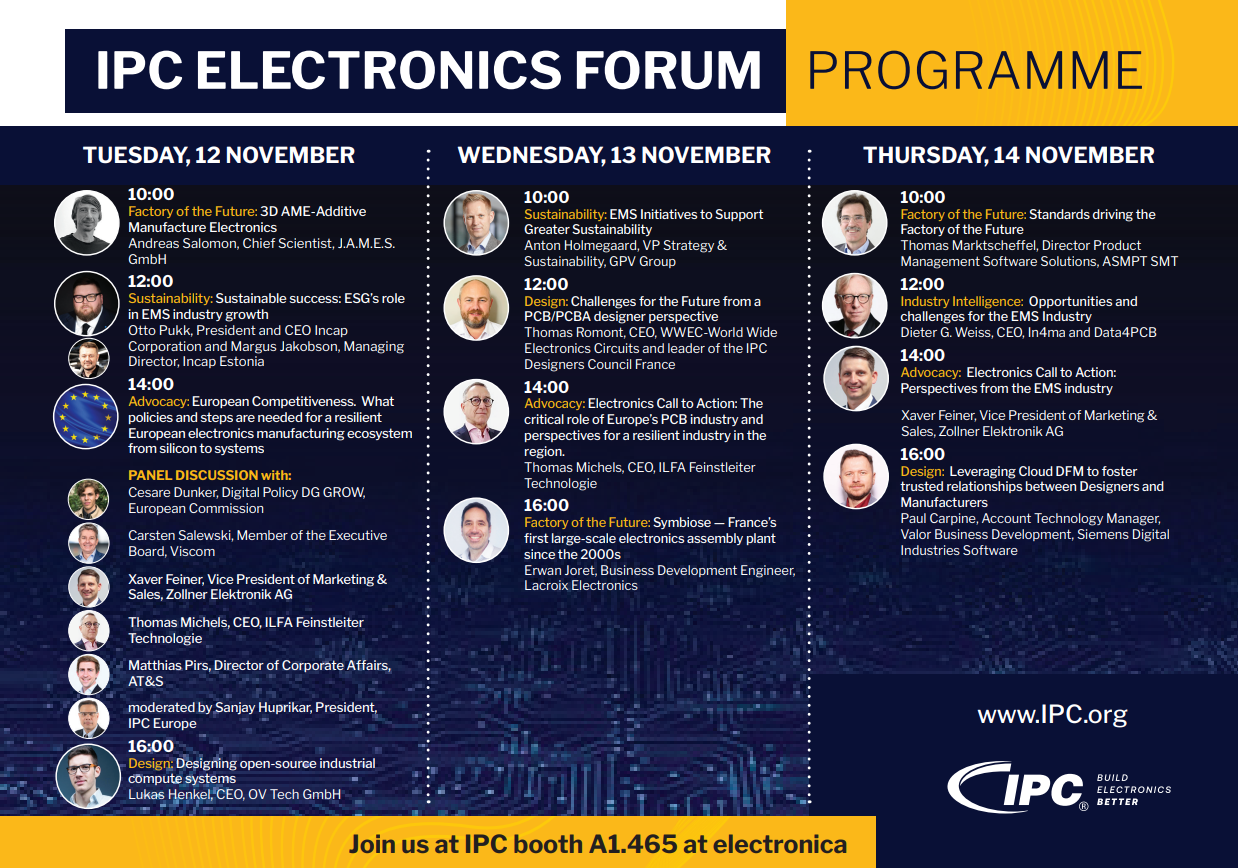IPC Celebrates National Apprenticeship Week with a Focus on Electronics Manufacturing Excellence
IPC is proud to announce its participation in National Apprenticeship Week, scheduled for November 17-23, 2024. This annual event highlights the critical role apprenticeships play in fostering a highly skilled workforce and supporting the U.S. economy.
During the week, IPC will highlight its successful Registered Apprenticeship Program, which has significantly contributed to mitigating the skills gap in the electronics manufacturing industry. IPC's program, approved by the U.S. Department of Labor, combines on-the-job training with classroom instruction tailored to meet the dynamic needs of the electronics sector.
Key Highlights of the IPC Apprenticeship Program:
- Employer-Driven Curriculum: The program is shaped by employers' direct needs and feedback, ensuring that apprentices acquire relevant and up-to-date skills.
- Competency-Based Progression: Apprentices advance through the program based on skill mastery, not just hours worked, fostering a more competent and confident workforce.
- National Standards Compliance: IPC’s standards are recognized across the United States, allowing for credential portability and consistent training quality nationwide.
Cory Blaylock, IPC director of workforce partnerships, commented, “This National Apprenticeship Week, we’re celebrating the incredible strides IPC has made in just one year with our Registered Apprenticeship Program. It’s inspiring to see nearly 100 apprentices across nine companies and eight states dive into this journey. Thanks to the amazing support from partners like the Institute for American Apprenticeships (IAA) and Jobs for the Future (JFF), we’ve secured over $125,000 in grant funding to help employers and schools bring these opportunities to life. Watching apprentices and their mentors grow together has been truly rewarding—it strengthens careers, companies, and the industry. This week is about honoring their success and looking ahead to even bigger things in 2025.”
IPC's commitment to workforce development is evident in its partnerships with industry leaders and educational institutions. One such collaboration involves the Diboll Independent School District in Diboll, Texas, where IPC's pre-apprenticeship training is integrated into the Career and Technical Education curriculum. This initiative prepares students for IPC’s apprenticeship and places them directly into high-demand careers.
Keri Brown, manager of people, culture and brand, said, “EDM was inspired to start offering apprenticeship programs as a way to invest in the next generation of talent and to build a strong, skilled workforce that aligns with our company's commitment to quality and innovation.
IPC's Apprenticeship program ensures that our team is equipped with the necessary knowledge and skills for our industry, ultimately benefiting our customers and supporting the growth of our employee-owners.”
Another partner, Arc-Tronics, is a world-class provider in the electronic manufacturing services (EMS) industry in Elk Grove, Illinois stated, “In November of 2023, IPC introduced their first IPC Electronics’ Assembly Apprenticeship Program; this program perfectly aligns with Arc-Tronic’s philosophy on employee investment and growth. In 2024, Arc-Tronics enrolled its first 11 employees into the IPC apprenticeship program. Watching our apprentices and their mentors navigate together through the apprenticeship program has been a rewarding experience. We are grateful to IPC for creating this apprenticeship program that is directly related to our industry. A formalized, structured program provides a clear path for our employees to achieve an accredited apprenticeship in electronics assembly. Increasing employee knowledge benefits the employee and strengthens the entire company. We look forward to our current apprentices completing this program and celebrating their success, and we look forward to offering the program for years to come.”
National Apprenticeship Week will include workshops, open houses, and seminars nationwide. These events are designed to educate potential apprentices about the opportunities available and to showcase the success stories of current and past participants. As an Apprenticeship Ambassador for the U.S. Department of Labor, IPC encourages everyone to engage with our community on social media and live events.
More Apprenticeship Information: IPC's NAW 2024 Celebration Page
Partner Event Details:
- November 21, 2024; 2-3 pm ET
- Jobs for the Future (JFF) Webinar: A Decade of Impact in Advancing Equity in Apprenticeships
- November 20, 2024; 3-4 pm (your local time)
- WorkHands Webinar: Network Release
- Entries accepted until November 20, 2024
- Institute for American Apprenticeships: Meme and TikTok Contest

